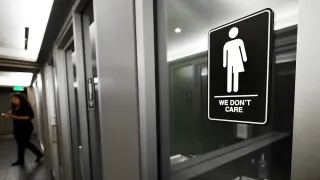
Jul 31
LinkedIn Quietly Removes Protections for Transgender Users, Sparking Concerns of Targeted Harassment
READ TIME: 3 MIN.
LinkedIn, the world’s largest professional networking platform, has come under scrutiny after quietly updating its hate speech policy to remove explicit references that protected transgender users from being misgendered or deadnamed. The change, which was first spotted by the nonprofit organization Open Terms Archive on July 29, 2025, has sparked immediate concern among LGBTQ+ advocates and users of the platform, who fear the move could expose transgender people to increased levels of harassment online .
Misgendering refers to addressing someone using terms or pronouns that do not align with their affirmed gender, while deadnaming involves referencing a transgender person by their birth name rather than their chosen name. Both practices are widely recognized by LGBTQ+ advocacy groups as forms of harassment that can have profound negative impacts on the well-being and safety of transgender people .
Previously, LinkedIn’s ‘Hateful and Derogatory Content’ policy included clear language prohibiting the “misgendering or deadnaming of transgender individuals” as specific examples of hateful conduct on the platform. However, as of July 28, 2025, this clause was removed. While the policy still bans content that “attacks, denigrates, intimidates, dehumanizes, incites or threatens hatred, violence, prejudicial or discriminatory action” based on traits such as race, ethnicity, gender, sexual orientation, or disability, it no longer explicitly names misgendering or deadnaming as unacceptable behaviors .
In addition to removing these examples, LinkedIn also deleted references to “race or gender identity” from its list of inherent traits for which negative comments would be considered harassment. Now, the policy only specifically mentions “disparaging another member’s… perceived gender,” without referencing race or gender identity as protected categories .
The changes were made quietly, with no public announcement or explanation from LinkedIn on its Trust & Safety blog, a departure from previous practice when the company has communicated updates to its community guidelines .
LGBTQ+ organizations and digital rights groups have responded with alarm, warning that the absence of explicit protections could embolden individuals intent on targeting transgender users. “By removing this language, LinkedIn risks signaling to users that misgendering and deadnaming are no longer viewed as serious violations, making transgender people more vulnerable to harassment and exclusion in professional spaces,” said a spokesperson from Open Terms Archive .
The change has prompted calls for LinkedIn to reinstate and strengthen its protections for transgender users. Advocates emphasize that professional networks are not immune to the harm caused by anti-trans harassment, and that clear, enforceable policies are essential for ensuring the safety and inclusion of marginalized groups online .
Transgender professionals rely on platforms like LinkedIn to build their careers, network with peers, and access new opportunities. The removal of explicit hate speech protections raises questions about the company’s commitment to diversity and inclusion, particularly as many organizations strive to create more equitable workplaces. “When a platform as influential as LinkedIn fails to protect its transgender users, it sends a message to employers and the business community at large that anti-trans harassment is tolerable,” said a spokesperson for a leading LGBTQ+ advocacy organization .
Some users have expressed concern that the policy shift could make them less likely to engage on LinkedIn, fearing that their professional identities may become targets for harassment without adequate recourse. Others worry that the change could discourage employers from addressing anti-trans bias in their own hiring and networking practices.
Critics have also raised concerns about the lack of transparency surrounding the policy change. Unlike previous updates, which were communicated openly, this change was implemented without public notice, and only the English version of LinkedIn’s policy has been updated. Non-English versions, including French, German, and Spanish, have reportedly remained unchanged since at least 2023 .
The quiet nature of the change, combined with its selective application, has raised questions about LinkedIn’s global commitment to inclusion and safety for all users, regardless of language or location.
As of July 31, 2025, LinkedIn has not issued a public response to the concerns raised by LGBTQ+ organizations, digital rights advocates, or its own user community. Many are urging the company to clarify its position, reinstate explicit protections, and engage in transparent dialogue with affected communities .
The unfolding situation underscores the importance of clear, enforceable policies that protect vulnerable groups from online abuse, and highlights the ongoing struggle for transgender equality and safety in digital spaces.






